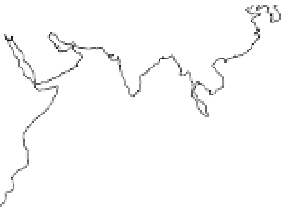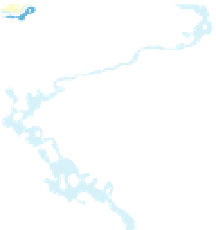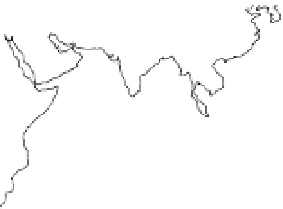Geoscience Reference
In-Depth Information
(
a
)
(
b
)
Fig. 5 The correlation between the objective dates of monsoon onset over Kerala as derived by Pai and
Rajeevan (
2009
) and the HadISST of a January b April using data of the years 1971-2000
and the convective cloud bands (represented by OLR) during active and break monsoon as
average of several such days are shown in Figs
6
and
7
of Joseph and Sijikumar (
2004
).
Joseph and Sabin (
2008a
) showed that the ocean interacts with the atmosphere in the
AB cycle of the Asian summer monsoon. Prior to the beginning of an AB cycle, the SST
anomaly over north BoB reaches maximum positive value. At this time, the positive SST
anomaly zone extends from the Arabian Sea to about longitude 150E in the west Pacific
Ocean as may be seen in Fig.
6
taken from Joseph and Sabin (
2008a
) which gives the mean
SST anomaly of 11 AB cycles in the 8 pentads (of an average AB cycle of period 40 days).
In the SST gradient area to the south of maximum SST anomaly, a convective cloud band
forms after about a pentad that in the following 2-3 days generates an LLJ through
peninsular India and the active phase of the monsoon begins. The cloud band thus formed
(reducing the incident solar radiation) and the strong winds of the LLJ (by causing
evaporation at the ocean surface) cools the ocean there, when the convection weakens and
the LLJ moves south to an equatorial location in the Indian Ocean which has warmer SST,
where a new cloud band forms. This is the break monsoon phase. North BoB has large
amplitude SST variations in response to the net heat flux changes in the AB cycle as the
ocean mixed layer depth (MLD) there is shallow (typically 20 metres). See also Sengupta
et al. (
2001
). That convection forms in the SST gradient area has been shown empirically
by Shankar et al. (
2007
) and Sabin et al. (
2012
) and with modelling studies by Lindzen and
Nigam (
1987
) and Back and Bretherton (
2009
).
The eastwards extent of the LLJ is up to longitude 120E in La Ni ˜a years. In El Ni ˜ o
years, LLJ extends up to 180E when between longitudes 120E and 180E the seasonal



















